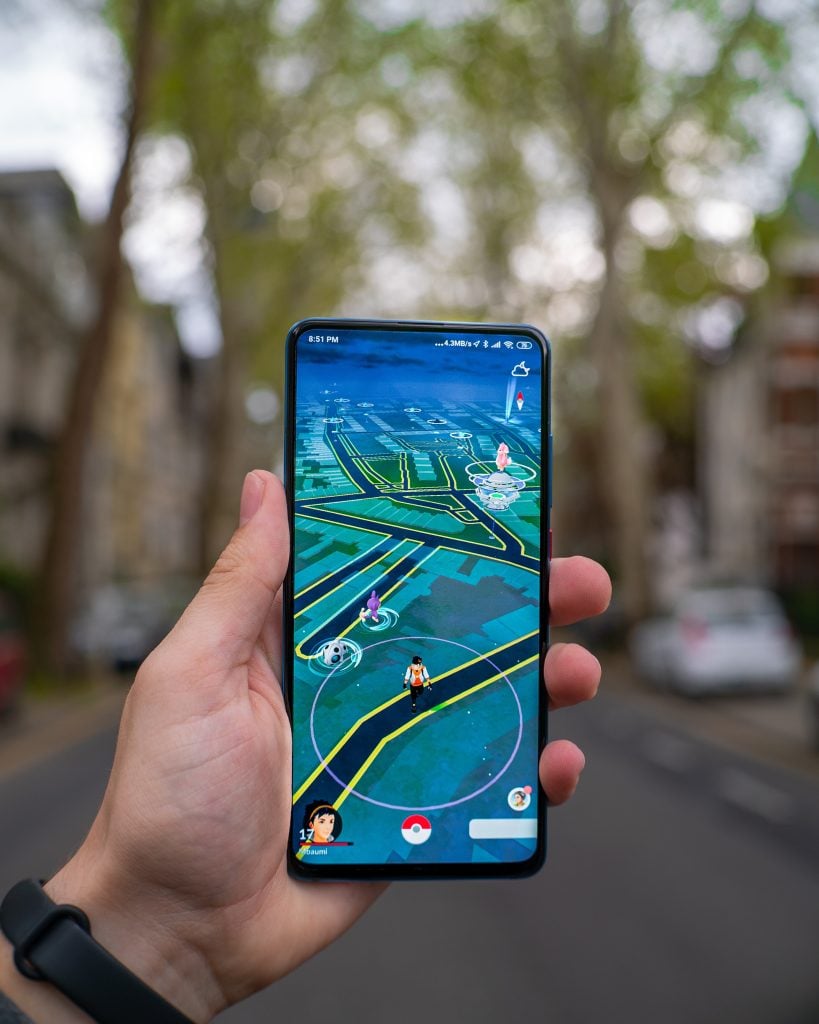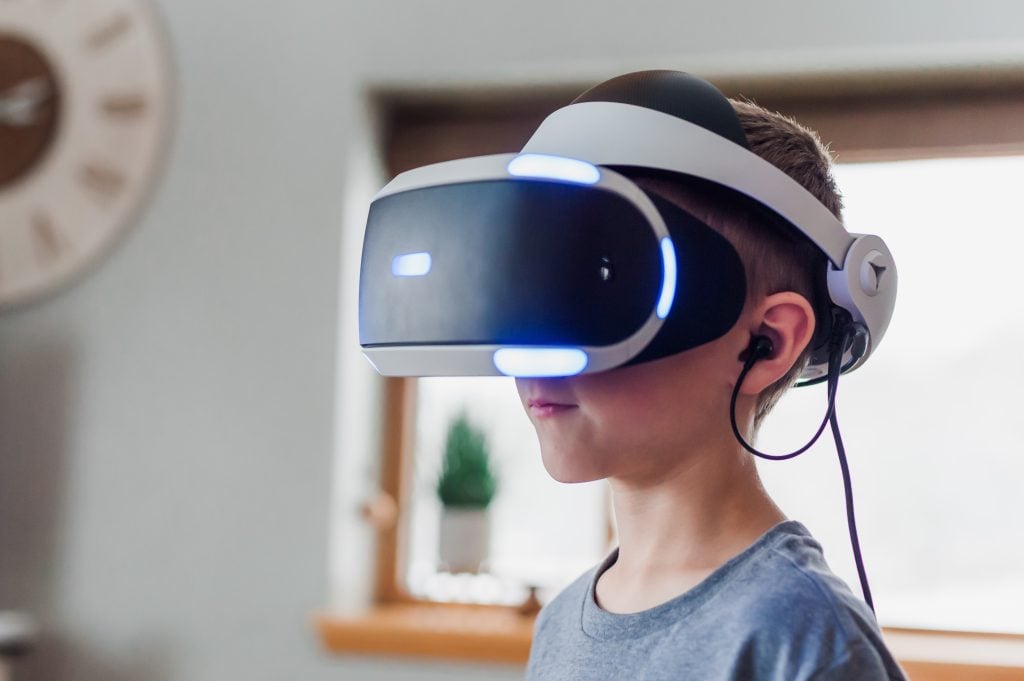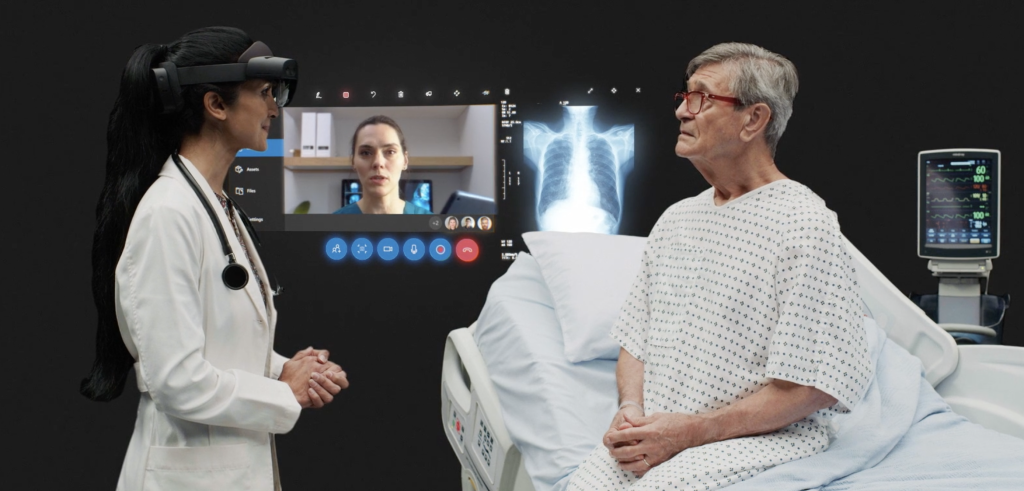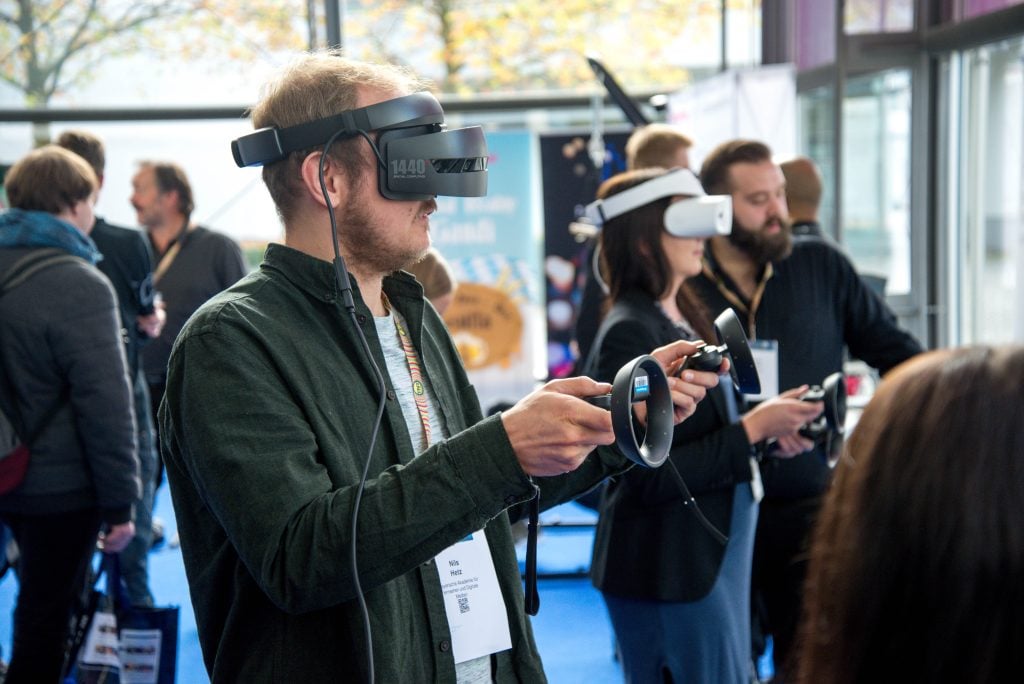In today’s rapidly evolving technological landscape, augmented reality (AR), virtual reality (VR) and Mixed Reality (MR) have emerged as groundbreaking technologies with the potential to revolutionize the way we interact with the digital world. AR, VR, and MR are all immersive technologies that offer interactive experiences to users. Though they share similarities, each technology has its unique features and applications.
Augmented Reality (AR)
Augmented reality is a technology that overlays digital information onto the real world, enhancing our perception and interaction with our surroundings. By blending computer-generated elements with the physical environment, AR provides users with an enriched experience that seamlessly integrates virtual elements into their real-world context.
AR can be implemented through various devices, such as smartphones, tablets, smart glasses, and headsets.

One of the prime examples of AR is the widely popular mobile game, Pokémon Go. Players use their smartphones to view their surroundings through the device’s camera, while virtual Pokémon characters are superimposed onto the real world. This game exemplifies how AR can seamlessly merge the virtual and physical worlds, enabling users to interact with virtual objects within their actual environment.
Another notable example of AR is the Ikea Place app. This application allows users to virtually place furniture items in their homes using their smartphones. By leveraging AR, users can visualize how a specific piece of furniture will look in their space before making a purchase.
AR also finds applications in various industries, including education, healthcare, and marketing. For instance, in education, AR can be used to create interactive learning experiences by overlaying educational content onto textbooks or real-life objects. In healthcare, AR can assist surgeons during complex procedures by displaying critical patient information in their field of view. In marketing, AR can enhance product demonstrations by allowing customers to see virtual representations of products in real-time.
Virtual Reality (VR)
In contrast to augmented reality, virtual reality immerses users in a completely simulated environment, separating them from the physical world.
Virtual Reality (VR) is a simulated experience that can be similar to or completely different from the real world. It typically involves the use of a headset with a screen, which provides a 3D visual and audio experience. VR aims to create a sense of presence, allowing the user to feel like they are truly immersed in a virtual environment.

VR can be used in various applications, such as gaming, training simulations, virtual tours, and even therapy.
For example, in gaming, VR allows players to fully immerse themselves in the game world, providing a more immersive and engaging experience. In training simulations, VR can recreate real-world scenarios for training purposes, such as flight simulations for pilots or surgical simulations for doctors. Pilots can practice flying in a virtual cockpit, soldiers can train in virtual war zones, and doctors can perform virtual surgeries to improve their skills. VR also allows users to take virtual tours of famous landmarks, museums, and cities from the comfort of their homes. This technology has made it possible for people to explore destinations they may never visit in person. Another VR usage is in therapy to treat phobias, anxiety disorders, and PTSD. By exposing patients to virtual environments that trigger their fears or traumas, therapists can help them confront and overcome their anxieties in a controlled setting.
Mixed Reality (MR)
Mixed Reality (MR) is a technology that combines elements of both Augmented Reality (AR) and Virtual Reality (VR) to create a new and immersive experience. Unlike AR and VR, which are often used interchangeably, MR aims to create a seamless blend of virtual and real-world environments.
In Mixed Reality, virtual objects are not just overlaid onto the real world (AR), nor are users completely immersed in a virtual environment (VR). Instead, MR allows virtual objects to interact with the physical surroundings and enables users to interact with them in a natural and intuitive way. This is achieved by using advanced sensors, cameras, and algorithms to map and understand the real-world environment in real-time.
One example of Mixed Reality can be seen in Microsoft’s HoloLens. The HoloLens is a head-mounted display that allows users to see and interact with virtual objects in their real-world environment. Users can wear the HoloLens and experience holographic content seamlessly integrated into their surroundings. For instance, users can place virtual furniture in their living room to see how it would look in real life, or they can interact with virtual characters that appear to be present in their physical space.
Another example of Mixed Reality is Magic Leap’s Magic Leap One. Similar to the HoloLens, the Magic Leap One is a wearable device that combines virtual and real-world elements. With the Magic Leap One, users can experience interactive and lifelike digital content integrated into their environment. For instance, users can play a virtual game that takes place on their coffee table or create 3D sculptures that appear to be physically present in their workspace.

Mixed Reality has the potential to revolutionize various industries. In healthcare, for example, MR can be used to assist surgeons during operations by overlaying vital patient information directly onto their field of view. This can enhance precision and reduce the risk of errors.
Now that we’ve explained each of these technologies, let’s take a look at how they differ from each other for better understanding.
AR vs VR vs MR: Differences
Here are the differences between Augmented Reality (AR), Virtual Reality (VR), and Mixed Reality (MR) technologies:
- Integration with the Real World:
- AR: Adds digital content on top of the real-world environment.
- VR: Completely replaces the real-world environment with a virtual one.
- MR: Combines digital content with the real world, allowing them to interact with each other.
- User’s Awareness of the Real World:
- AR: Users remain aware of and can interact with the real world.
- VR: Users are isolated from the real world and fully immersed in the virtual environment.
- MR: Users can interact with both the real world and virtual objects.
- Hardware:
- AR: Typically requires hardware like a camera and display (e.g. smartphone, tablet, AR glasses).
- VR: Requires a VR headset that blocks out the real-world view and often handheld controllers.
- MR: Requires specialized headsets (e.g. Microsoft HoloLens) that blend real-world and digital content.
- Interactivity:
- AR: Digital content is static and does not interact with the real-world environment.
- VR: Allows interaction within the virtual environment but not with the real world.
- MR: Digital content can interact with the real world in a contextually aware manner.
- Use Cases:
- AR: Often used for information overlay, gaming, navigation, and educational apps.
- VR: Mainly used for gaming, simulations, virtual tours, and therapy.
- MR: Used for applications requiring interaction between real and virtual objects, such as collaborative 3D design, advanced training, and simulations.
- Level of Immersion:
- AR: Provides a low level of immersion as it simply overlays digital content on the real world.
- VR: Provides a high level of immersion by placing the user in a fully simulated environment.
- MR: Offers a medium to high level of immersion by blending real and virtual objects in a contextually aware manner.
Future of AR, VR, and MR
The future of Augmented Reality (AR), Virtual Reality (VR), and Mixed Reality (MR) holds immense potential for various industries. These emerging technologies are revolutionizing the way we interact with digital content and are set to transform industries such as gaming, healthcare, education, tourism, and manufacturing.

AR, VR, and MR have already made significant advancements in the gaming industry. With the introduction of immersive virtual environments, gamers can now experience a whole new level of realism and interaction. The technology allows users to be fully engrossed in the game, giving them a sense of presence and enhancing the overall gaming experience. As these technologies continue to evolve, we can expect to see more advanced gameplay, realistic simulations, and even greater integration with other forms of entertainment media.
The potential impact on the healthcare industry is also immense. Surgeons are using augmented reality to visualize 3D models of patients’ organs during surgeries, enabling them to perform complex procedures with greater precision. Virtual reality is also being used for pain management and therapy, creating immersive environments to distract patients from their discomfort. Additionally, medical students can benefit from virtual reality simulations that allow them to practice procedures in a safe and controlled environment.
Education is another industry that stands to benefit greatly from these technologies. Virtual reality can provide students with immersive and interactive learning experiences, enabling them to explore historical sites, travel to different countries, or even delve into complex scientific concepts. Augmented reality can enhance traditional textbooks by overlaying digital content such as videos, images, and interactive elements, making learning more engaging and interactive.
With products like the Apple Vision Pro making these technologies mainstream, it is clear that these three technologies will enhance the way we interact with a lot of industries in the near future.
RELATED:
- New Apple Patent Hints Towards a Cheaper Variant of Vision Pro Headset
- Apple’s Vision Pro Headset may be a Game-Changer in the field of Surgery & Medicine
- Apple Reportedly Developing Exclusive 3D Content for Vision Pro Headset
- Will Apple’s “Vision Pro” Require a Name Change in China? Huawei Registered the Same Trademark Four Years Ago
- Apple Vision Pro: How does it compare with Meta Quest Pro and HTC Vive XR Elite?




